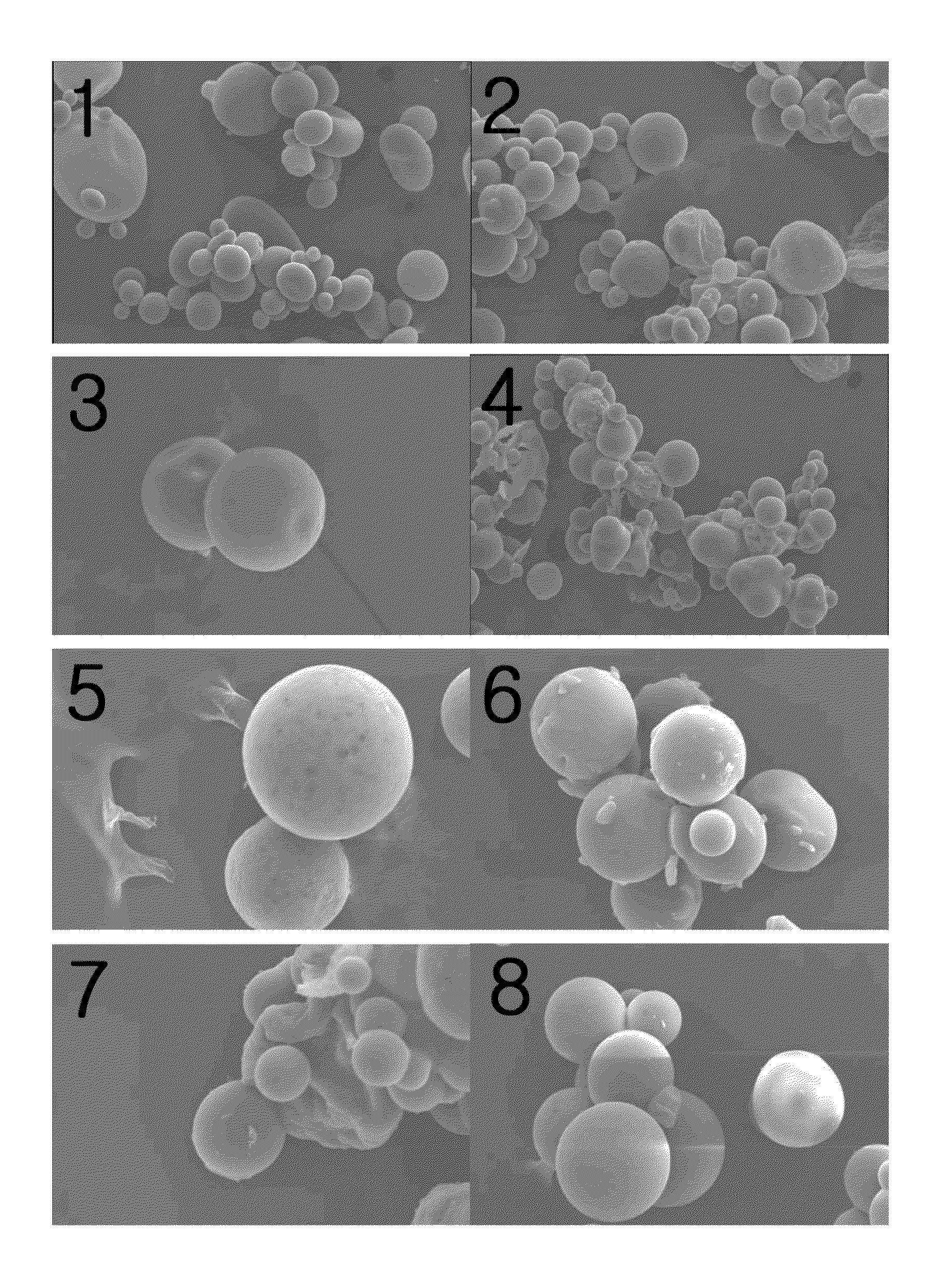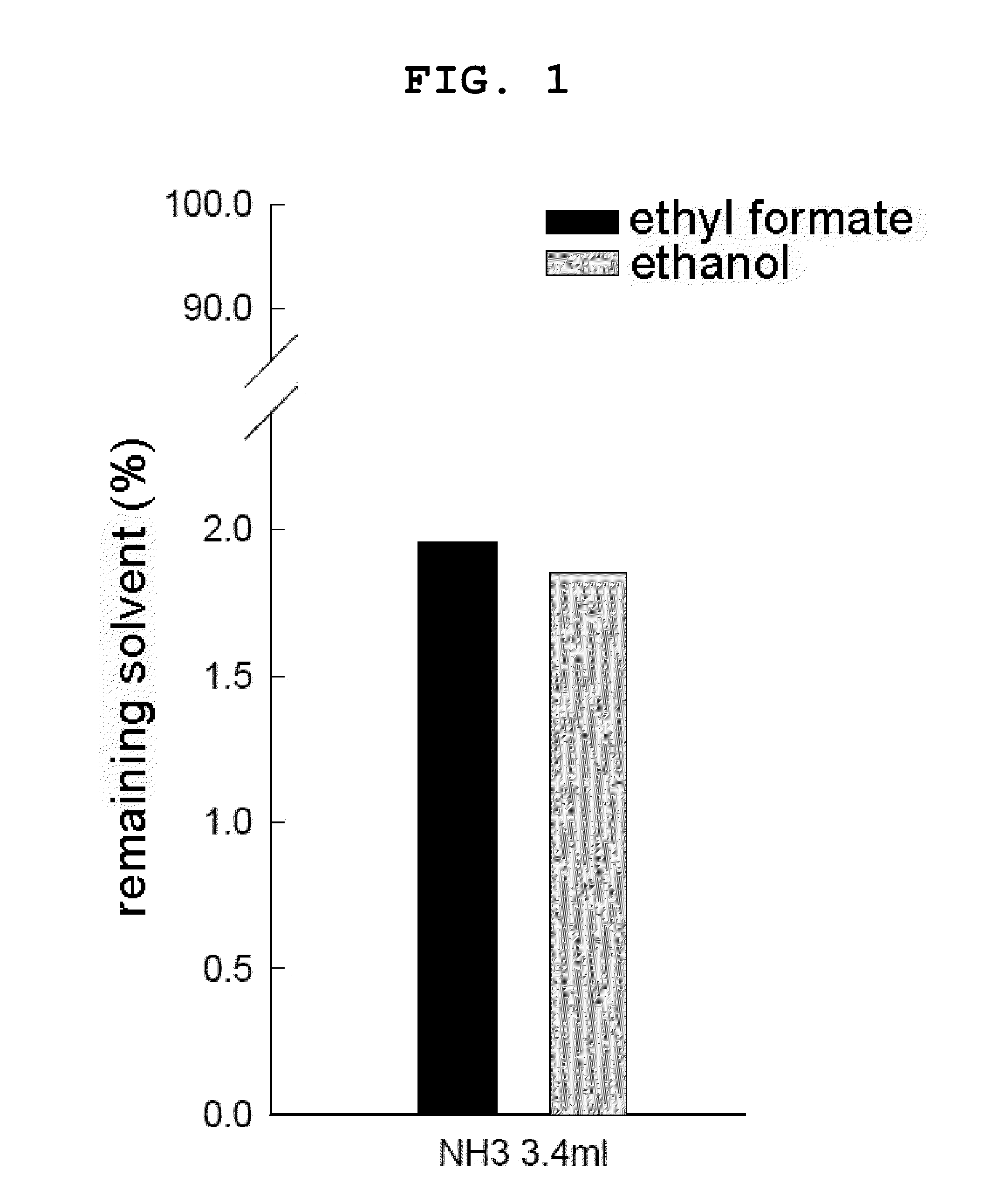Method for preparing microspheres and microspheres produced thereby
a technology which is applied in the field of preparation of microspheres and microspheres produced by thereby, can solve the problems of increased human skin cancer, excessive use of water, and increased temperature, and achieve the effect of convenient preparation of target drug-containing polymeric microspheres and minimizing the amount of waste solution
- Summary
- Abstract
- Description
- Claims
- Application Information
AI Technical Summary
Benefits of technology
Problems solved by technology
Method used
Image
Examples
example 1
Comparison of Concentrations of a Remaining Solvent According to Concentrations of a Water-Insoluble Organic Solvent Mixed with a Dispersion Solvent
[0100] Measurement of a Remaining Solvent in the Preparation of a Polymeric Microsphere According to a Conventional Method
[0101]0.25 g of 7525 2.5E PLGA polymer was dissolved in 4 ml of ethyl formate (EF), and then emulsified in 40 ml of 0.5% polyvinyl alcohol (PVA) so as to provide an emulsion. Then, 3.4 ml of 28% NH3 solution was added to the emulsion, followed by a reaction for 30 minutes. The resultant product was added with distilled water, and filtered. A microsphere was separated, and then re-dispersed in 80 ml of 0.1% PVA, followed by stirring. The information on 7525 2.5E PLGA polymer used in this example is noted in Table 1.
TABLE 1Information on 7525 2.5E PLGA polymerLactide:InherentName and trademarkmanufacturerGlycolideviscosity7525DLG2.5ESurModics75:250.25 dL / g(LAKESHORE-PharmaceuticalsBIOMTERIALS)Co. (US)
[0102]An analysis o...
example 2
Comparison of Concentrations of a Remaining Solvent According to the Temperature of a Dispersion Solvent in a Re-Dispersion Step
[0109]In the preparation of a polymeric microsphere, it was expected that the reaction of acid or base for removing a water-insoluble organic solvent changes the temperature of an aqueous phase, thereby having an effect on the amount of a remaining solvent. Accordingly, the polymeric microsphere preparation process was divided into two steps. In the first step, a base or acid solution is added and the reaction is completed, and in the second step, after the completion of the reaction, a microsphere is filtered and separated, and then is re-dispersed in PVA solution, followed by stirring. In this example, it was determined which step has a temperature as an important role for reducing the remaining solvent.
[0110] Comparison of Concentrations of a Remaining Solvent According to the Temperature of a Dispersion Solvent in a Re-Dispersion Step in the Polymeric M...
example 3
Comparison 1 of Concentrations of a Remaining Solvent According to the Concentrations of a Water-Insoluble Organic Solvent Mixed with a Dispersion Solvent
[0130]In Example 1, it was found that when an organic solvent is previously added to a dispersion solvent, the concentration of the remaining organic solvent is reduced. Accordingly, while the temperature of a dispersion solvent in a re-dispersion step is maintained at a high temperature, the amounts of a remaining solvent were measured according to the varying amounts of a water-insoluble organic solvent mixed with a dispersion solvent.
[0131]500 mg of 4.5A PLGA (Lactide:Glycolide=85:15, 0.45 dL / g, SurModics Pharmaceuticals Co., US) was dissolved in 4 ml of ethyl formate so as to provide a dispersed phase. The dispersed phase was emulsified in 20 ml of 0.5% PVA aqueous solution so as to provide an emulsion, in which the PVA aqueous solution was previously added with 0, 1, 2 or 4 ml of ethyl formate. Then, 6.2 ml of 10N NaOH was add...
PUM
| Property | Measurement | Unit |
|---|---|---|
| Temperature | aaaaa | aaaaa |
| Temperature | aaaaa | aaaaa |
| Temperature | aaaaa | aaaaa |
Abstract
Description
Claims
Application Information
 Login to View More
Login to View More - R&D
- Intellectual Property
- Life Sciences
- Materials
- Tech Scout
- Unparalleled Data Quality
- Higher Quality Content
- 60% Fewer Hallucinations
Browse by: Latest US Patents, China's latest patents, Technical Efficacy Thesaurus, Application Domain, Technology Topic, Popular Technical Reports.
© 2025 PatSnap. All rights reserved.Legal|Privacy policy|Modern Slavery Act Transparency Statement|Sitemap|About US| Contact US: help@patsnap.com



